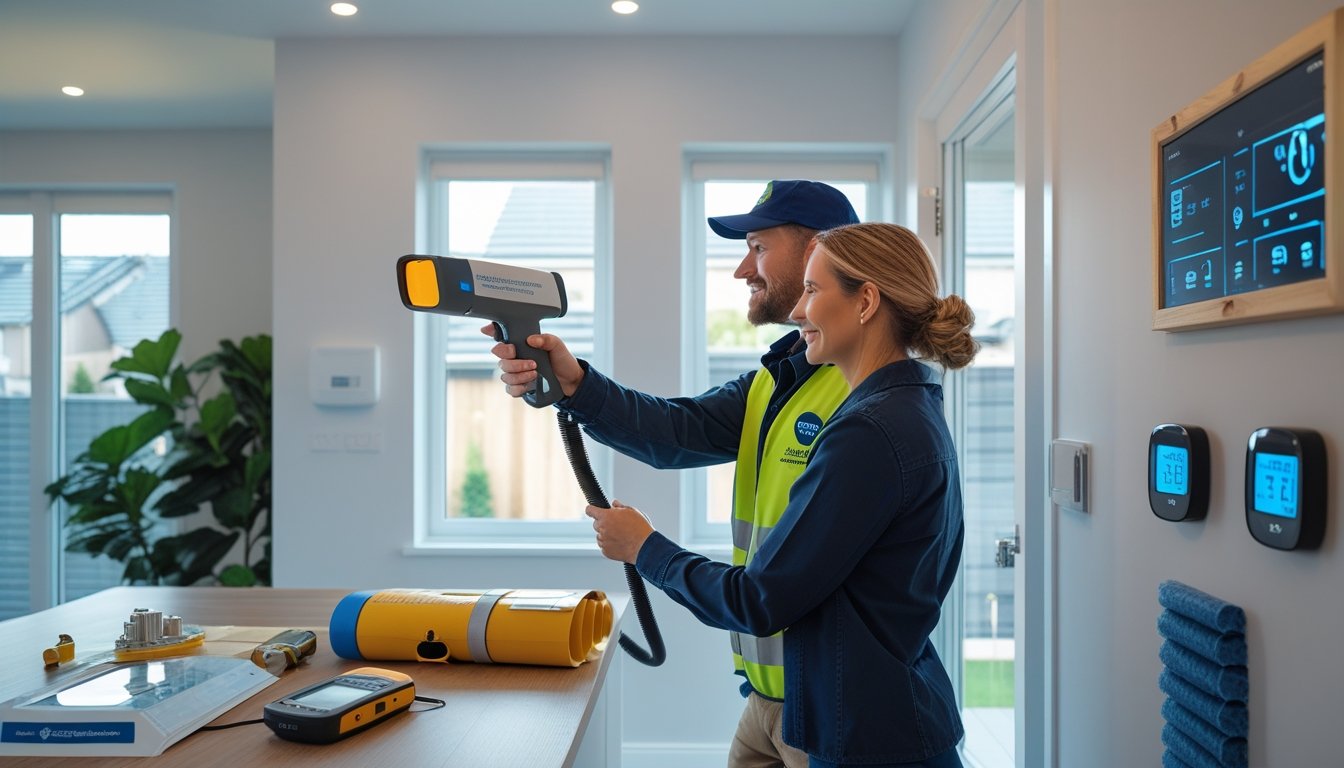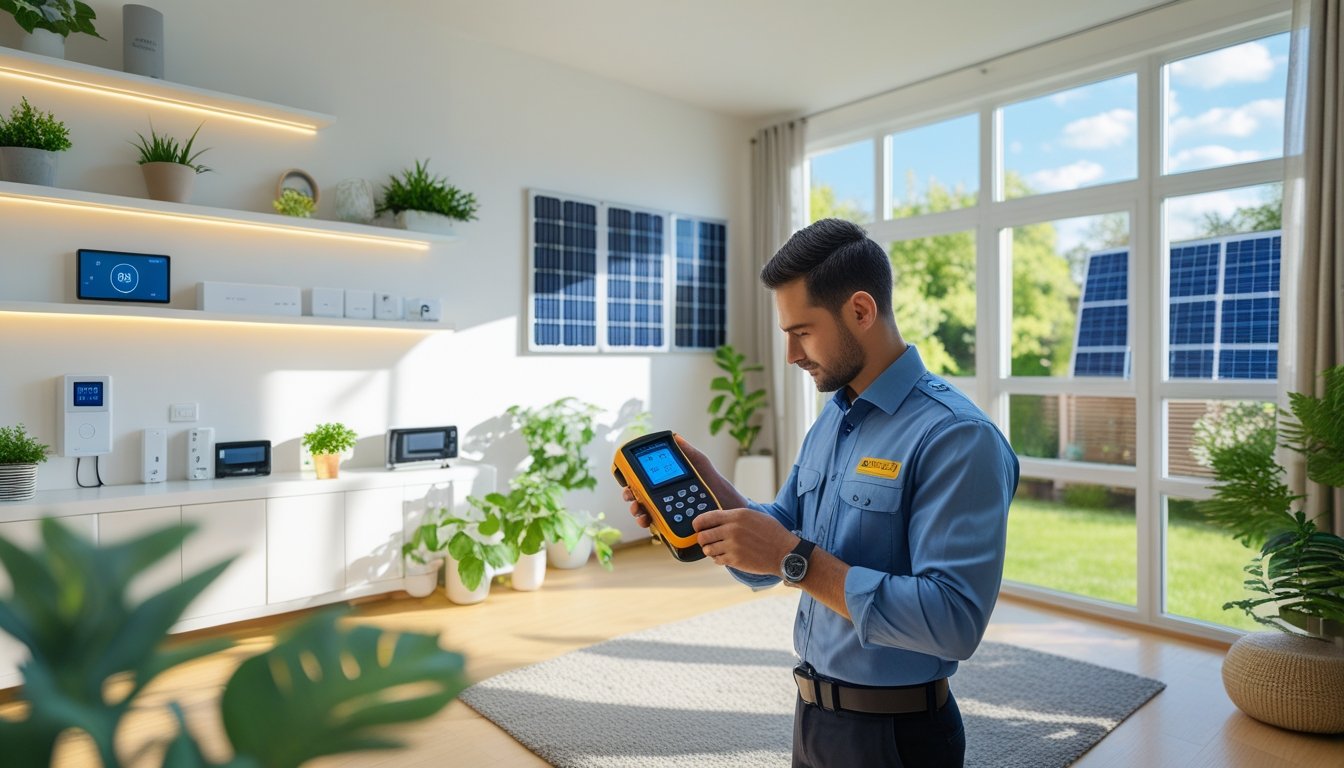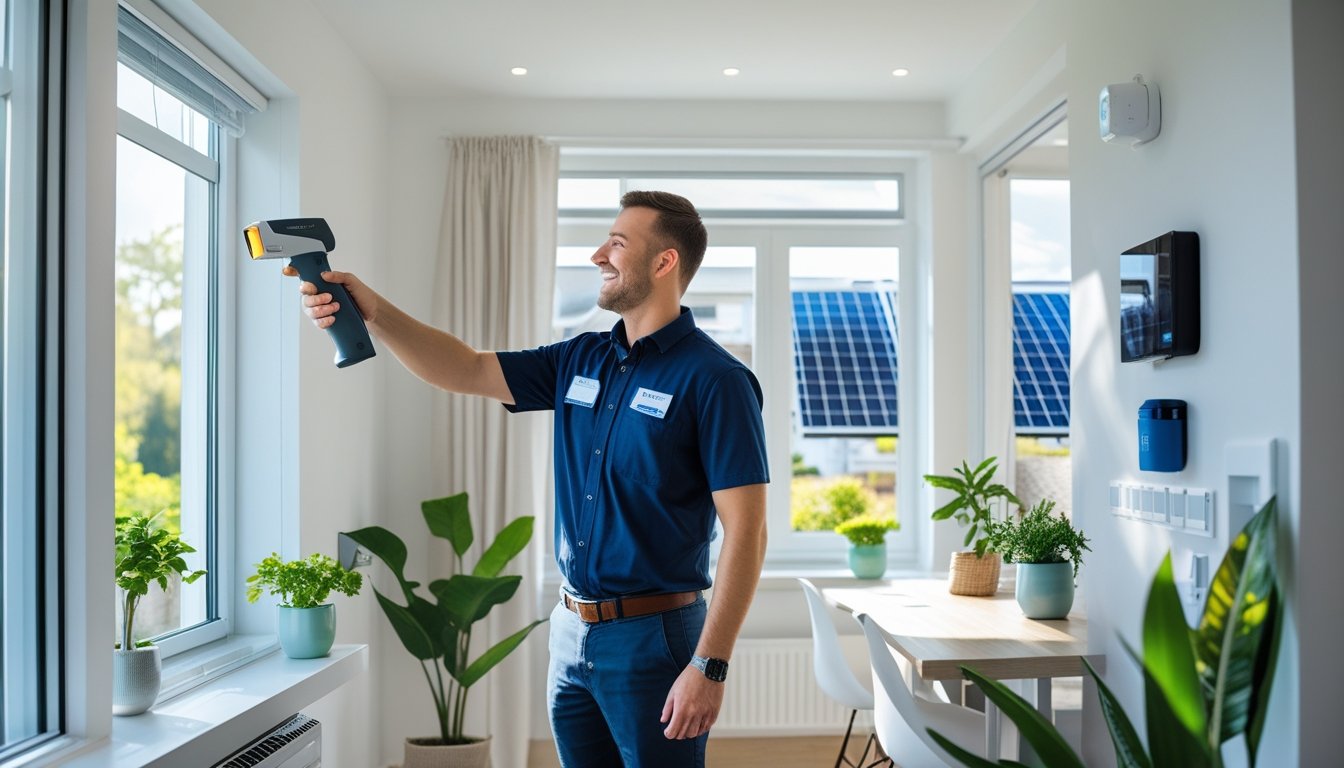Late updated: 08 Jul 2025 11:07
Written by: Sarah Hollister
Tips For A Sustainable Home Energy Audit: Expert Strategies for Efficiency
Our homes hold significant potential to become more sustainable with just a few mindful adjustments. By focusing on energy audits, we open the door to understanding where inefficiencies hide. Conducting a home energy audit is a crucial step towards reducing energy waste and boosting your household's efficiency.

A comprehensive energy audit uncovers opportunities that might otherwise go unnoticed. From identifying drafts to spotting inefficient appliances, these audits provide a clear roadmap for prioritising improvements. The process empowers us to make informed decisions that can lead to tangible energy savings and increased comfort.
Embarking on a home energy audit journey isn't just about cutting costs. It's a commitment to a more sustainable lifestyle and a reduced carbon footprint. Empowered with knowledge and clear objectives, we take vital steps towards a greener, smarter living space.
Key Takeaways
- Home energy audits highlight areas for efficiency improvement.
- Actions taken post-audit can significantly enhance energy savings.
- Engaging with sustainable upgrades promotes a greener lifestyle.
Essential Tips for a Sustainable Home Energy Audit

Achieving a sustainable home involves more than just switching off lights. It requires a thorough examination of energy consumption, air quality, and potential improvements. Let's explore practical strategies to enhance energy efficiency in our homes.
Assessing Energy Consumption and Utility Bills
To begin, understanding our energy usage is key. Reviewing utility bills helps highlight consumption patterns and potential inefficiencies. We should compare current energy use with past usage to pinpoint trends. Making note of high-usage months is particularly useful.
Creating a summary of our energy consumption can help identify areas for improvement. Setting targets for reduced consumption is easier when we have clear data. This also allows us to budget effectively for energy-saving improvements.
Identifying Air Leaks and Improving the Building Envelope
Air leaks can seriously affect our home's energy efficiency. They allow conditioned air to escape, causing HVAC systems to work harder. To find leaks, we can examine windows, doors, and other openings. Using a lit incense stick or thermal camera helps highlight areas where air might be escaping.
After identifying leaks, we should seal them using caulk or weatherstripping. Improving the building envelope in this way can reduce energy loss and improve comfort. It's an inexpensive yet effective solution to save on utility bills.
Evaluating Insulation and HVAC Systems
Effective insulation is crucial to maintaining energy efficiency. We need to check the insulation levels in the attic, walls, and floors. Areas with inadequate insulation lead to heat loss in winter and heat gain in summer.
For HVAC systems, regular maintenance is essential. We should inspect air filters, ducts, and vents. Clean or replace filters and ensure that systems have regular professional check-ups. This optimises the system’s efficiency and ensures clean air circulation.
Using Diagnostic Tools Effectively
Diagnostic tools are valuable in a home energy audit. Blower doors test air tightness by pressurising our home and identifying leaks. Infrared cameras visualise temperature differences that may indicate where insulation is lacking or where air leaks exist.
Carbon monoxide detectors are also crucial. They ensure our heating systems are not releasing harmful gases into the home. These tools provide concrete data, making our home energy audit more effective and reliable in identifying inefficiencies.
Maximising Energy Savings and Sustainable Upgrades
Maximising energy savings and implementing sustainable upgrades can transform our homes into models of efficiency and environmental stewardship. Key areas to focus on include upgrading to energy-efficient systems, leveraging financial incentives, and selecting modern, smart appliances.
Prioritising Energy Efficiency Upgrades
One of the most impactful steps we can take is prioritising energy efficiency upgrades. Engaging a home energy auditor certified by organisations like the Residential Energy Services Network (RESNET) or the Building Performance Institute can chart a path to optimising our home's energy use. These experts pinpoint areas of energy loss and recommend upgrades, such as improved insulation, sealed ductwork, and efficient windows.
Often, the biggest gains in energy savings come from these foundational improvements. Once the structural upgrades are in place, focusing on the HVAC system can yield further savings by improving temperature regulation and reducing unnecessary energy usage. Combining these changes with better insulation helps keep our homes comfortable and our carbon footprint low. The key is addressing the fundamentals first, ensuring the building envelope and systems work in harmony.
Leveraging Rebates, Tax Credits, and Local Incentives
Many countries offer rebates, tax credits, and local incentives to encourage energy-saving improvements. In the UK, schemes like the Green Homes Grant can support these initiatives. At a larger scope, the Inflation Reduction Act in the US has spurred similar opportunities. By exploring these options, we can significantly reduce the initial cost of upgrades.
It's essential that we keep abreast of such programmes, as they can change annually. Many incentives cover costs associated with insulation, solar panels, and energy-efficient appliances. Some local authorities even provide rebates for conducting energy audits. By capitalising on available incentives, we make sustainable upgrades more financially attainable, stretching our budget while shrinking our energy footprint.
Choosing Energy-Efficient Appliances and Smart Upgrades
Investing in energy-efficient appliances is not just a trend; it's a necessity for the modern sustainable home. Appliances with the Energy Star label assure us of lower energy consumption. Replacing older models with these newer counterparts can lead to significant energy savings over time.
Embracing smart home technology enhances our control over energy use. Smart thermostats, for example, adapt to our routines to heat and cool our homes more efficiently. Smart lighting can save energy by adjusting automatically based on occupancy or natural light. These devices work cohesively with our lifestyle, promoting ease of use while further reducing energy consumption.
Frequently Asked Questions

Home energy audits help identify opportunities to increase energy efficiency. From understanding the audit process to exploring improvement measures, knowing how audits are conducted can save money and reduce carbon footprints.
What steps are involved in conducting a home energy audit?
Conducting a home energy audit involves a comprehensive assessment of your home's energy use. Initially, we examine utility bills for anomalies. We then inspect the building envelope, focusing on walls, floors, windows, and doors, to detect air leaks or insulation issues. Using tools like smoke sticks or blower door tests can pinpoint drafts and energy loss areas.
How can one find a qualified professional to perform a home energy assessment?
Finding a certified energy auditor involves researching and selecting those recognised by national or regional energy organisations. We recommend seeking referrals from trusted sources or checking with local utility companies, as they often partner with certified auditors. Verify their credentials and experience to ensure a thorough assessment.
What items are typically included in a home energy audit checklist?
An energy audit checklist includes examining insulation, windows, doors, and appliances for efficiency. We also check HVAC systems, lighting, and air leaks. Monitoring utility bills is crucial to spot unusual spikes in energy consumption. Inspecting and sealing leaks with weatherstripping or caulking are essential steps in the checklist.
Are there any government programmes that offer free home energy audits?
Many government programmes provide free or subsidised home energy audits to promote energy efficiency. We recommend checking with local or national energy departments for available schemes. Some utility companies also offer audit incentives or rebates, which can offset the cost of improving energy efficiency.
What measures can be taken to improve a home's energy efficiency following an audit?
Post-audit, various measures can enhance energy efficiency. Implementing better insulation, upgrading to energy-efficient appliances, sealing air leaks, and using LED lighting make significant differences. We suggest regular maintenance of heating and cooling systems to ensure optimal performance.
How often should a home energy audit be conducted to ensure sustained energy efficiency?
Conducting a home energy audit every few years is advisable to maintain energy efficiency. We suggest scheduling audits after significant home renovations or changes in energy consumption patterns. Regular audits ensure any new inefficiencies are promptly identified and addressed.
